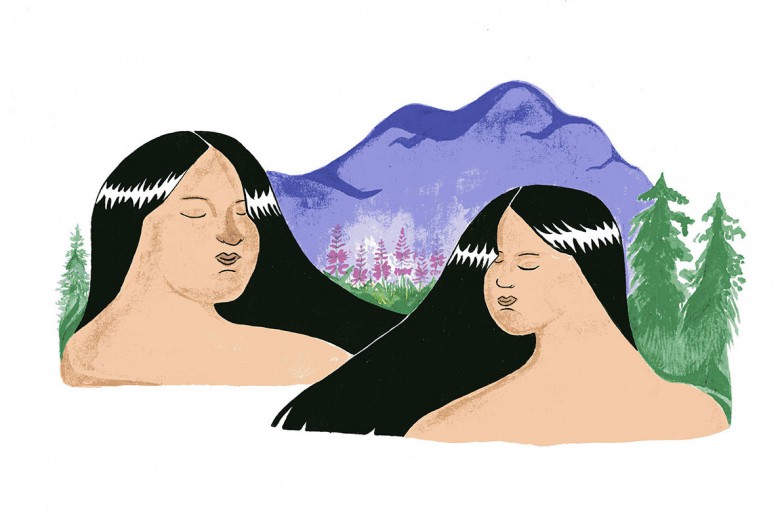
Dancing on Our Turtle’s Back: Stories of Nishnaabeg Re-Creation, Resurgence and a New Emergence
By Leanne Simpson
Arbeiter Ring 2011
What does reconciliation look like for Indigenous peoples in what is currently Canada? In part, argues Leanne Simpson in Dancing on Our Turtle’s Back, it must take the form of the resurgence of Indigenous peoples’ political traditions in their nation-to-nation relationships with Canada.
For Canada, however, reconciliation is about turning a page in its colonial history. This notion emanates from the Truth and Reconciliation Commission, as mandated by the Indian Residential Schools Settlement Agreement, which is designed to promote healing between residential school survivors and Canadians through truth telling. The Truth and Reconciliation Commission is based on principles that are victim centred. It is meant to look forward, but it is doing so without naming decolonization as integral to the future of Canada’s relationships with Indigenous peoples. For Canada, reconciliation means apologizing for its history without recognizing its current role in neo-colonialism.
Dancing on Our Turtle’s Back unpacks some of the implications that this narrow notion of reconciliation holds for Indigenous peoples. For example, framing reconciliation as turning the page ensures a future of colonialism in Canada. Indigenous peoples have not and cannot forget the residential school genocide era while its effects remain tangible in many Indigenous families and communities – whether urban or reserve – in the form of intergenerational trauma. Turning the page on this existing trauma is a form of erasure as much as it is a way to make a history of genocide less uncomfortable for settlers.
Reconciliation can be a form of neo-colonialism when it becomes an opportunity for Canadians to turn the page on, or silence, Indigenous peoples’ ongoing resistance to colonialism. Simpson shows that Canada’s narrowly defined form of reconciliation can preclude Indigenous peoples’ contention with the state. And there is much to contend yet: outstanding land claims, the state’s continued sanctioning of racism and sexism through its use of the Indian Act, its abrogation of existing treaties, and the continued occupation of Indigenous territories by settler society, resource extraction companies, etc. The risk of applying Canada’s narrow version of reconciliation to broader issues is that Indigenous peoples’ ongoing contention with the state will be criminalized because, in the minds of settlers and according to the state, we will have no reason to challenge settler colonialism – everything will be reconciled and therefore beyond critique.
In addition to interrogating colonialism, _Dancing on Our Turtle’s Back is in many ways a celebration of Anishinabek political traditions that, far from being erased, have survived the worst of colonialism and are now resurging in the contemporary context. After critiquing the state’s version of reconciliation, the majority of the book is about applying these traditions to explain what reconciliation should look like if Canada is serious about making things right with Anishinabek.
Simpson demonstrates that the resurgence of Anishinabek traditions is reconciliation. For example, the Anishinabek teaching of biskaabiiyang – a decolonizing theory based in Anishinabek thought – fights colonial erasure. Biskaabiiyang is a returning to one’s self, a verb meaning to look back and to reinterpret Anishinabek teachings in our contemporary context in ways that “bring meaning to our practices and illuminate our lifeways” today. Biskaabiiyang means that our political relationships with Canada cannot be solely defined by the state, but must also be informed by Anishinabek political traditions.
Reconciliation based in Anishinabek political traditions means both parties are committed to maintaining (re)balanced relationships without one party dominating the other; it means taking into account the concerns of everyone, including the ecology, when decisions are being made; it means moving toward an understanding of decolonization as a process that can be engaged right now instead of a far-off goal for which we must wait. A broad and decolonizing definition of reconciliation means Anishinabek will be able to engage in a nation-to-nation relationship with Canada as Anishinabek, rather than being grouped with all Indigenous peoples into a defanged category of Aboriginal Canadians.
As Simpson discusses in the last sections of the book, true reconciliation will occur when new generations of Anishinabek and other Indigenous peoples are able to enjoy their cultures, languages, territories and political systems free of state interference. Reconciliation thus requires a complete cessation of Canada’s interventions in Indigenous communities, including, for example, ceasing to co-opt Indigenous peoples’ self-determination movements, so that our leaders are able to relate to Canada in ways that honour unique Indigenous political traditions.
Otherwise, reconciliation will just be a euphemism for neo-colonialism.
Anishinabek words in this review are intentionally not italicized to assert the validity of the Anishinabek language in its own right. Italicization makes Anishinabek words appear to be exotic within English texts, ultimately rendering Indigenous languages as Other while recentring the languages of the West as normal.






